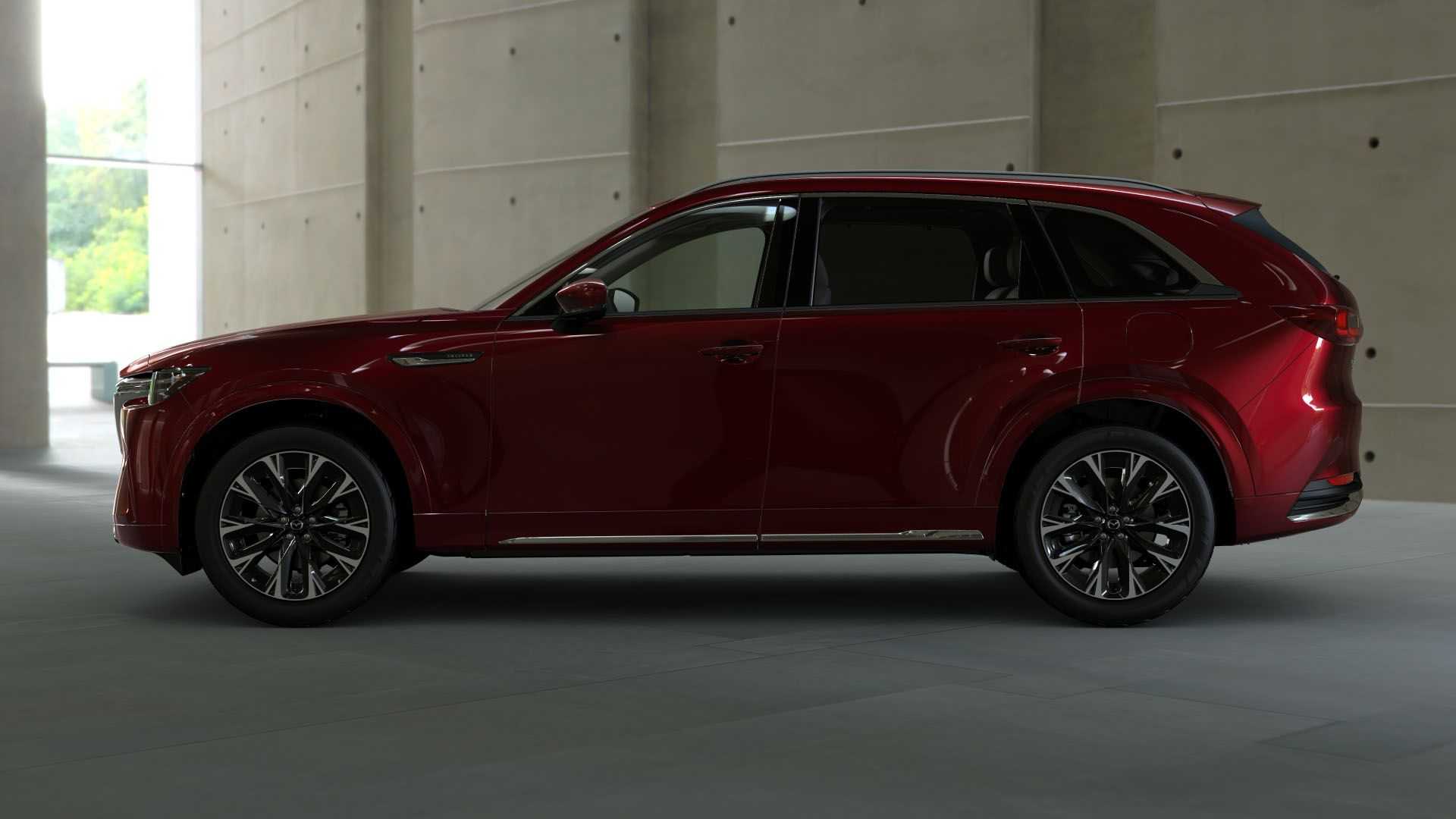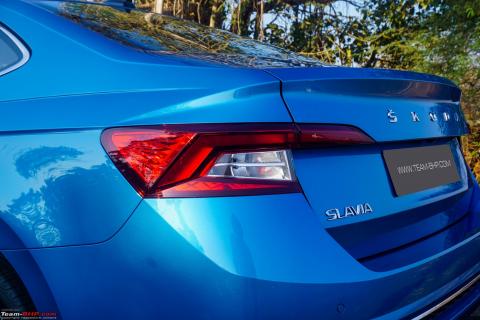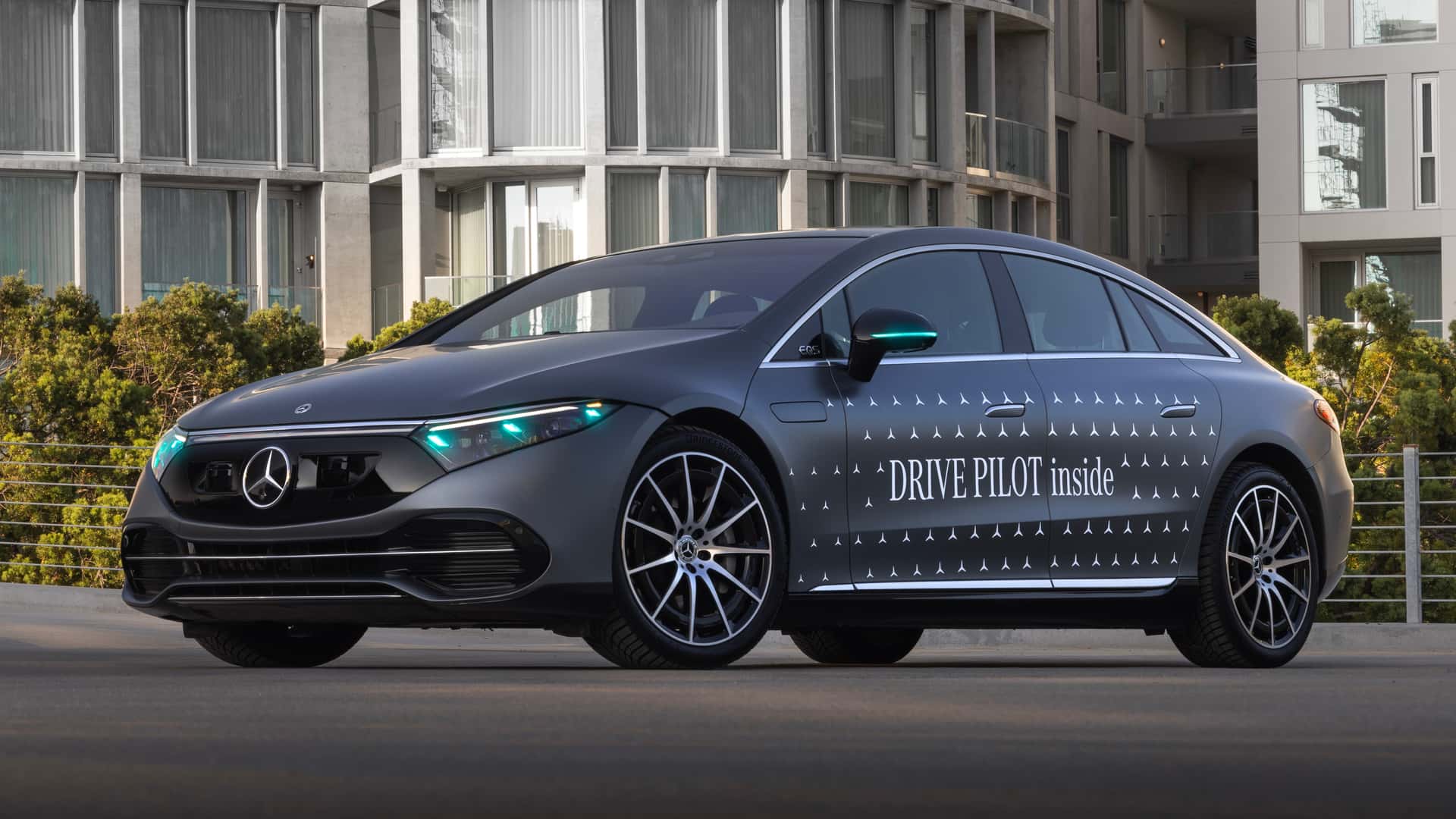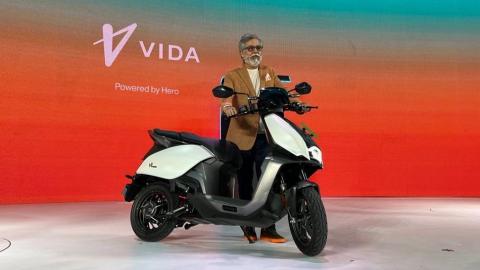
The spirit of the old Turbo GT lives on in a newly electrified 'GT Package' – how is it?
By Matt Bird / Monday, 23 October 2023 / Loading comments
Hopefully, we’re all up to speed on the new Porsche Cayenne by now. Yes, the one that still looks a lot like the old one – Porsche doesn’t really go in for the dramatic mid-life facelift. The important bits are an overhauled interior, a much bigger, cleverer battery for the E-Hybrid models (which will make up the majority of sales), and a reworked chassis – including new two-valve dampers – that ought to improve both comfort and performance. Porsche reckons its alterations are the most comprehensive update ever for an existing model, and have already made a favourable impression in the V8 S. Now it’s Turbo time.
There won’t be a Cayenne Turbo S E-Hybrid this time around. There’s not a conventional Turbo for the moment, either. Instead, those after a forced induction V8 above the S right now must take an electrified one, with a huge power gain from 474hp to 739hp thanks to the new 25.9kWh battery and 176hp electric motor employed by all E-Hybrid models (as well as revisions to the engine itself). This refreshed range also goes without the memorably mad Turbo GT (in Europe at least) though you might recall Porsche has a solution for that in the form of a GT Package model for the Cayenne Coupe. It costs £154,000 with the option box ticked and adds plenty of what made the old Turbo GT so absorbing – wider wheels, ceramic brakes, more negative camber, a titanium exhaust – onto 739hp. Which does promise quite a lot.
It’s a real surprise, then, to witness a car of such undeniable intent, hunkered down lower than standard on 22-inch wheels, start on electric power. It’s the first clue that this isn’t the Turbo GT that came before. However, where we’ve also got used to big, heavy plug-ins having puny EV ranges, the E-Hybrid really makes good on its claims of improved range, efficiency and power. It’ll scoot around urban areas and onto motorways without drama (or sound) for as long as you need it to (the official European claim is just over 50 miles; in the UK it’s rated at just under 45). For those who do care what strangers think – even if that’s not likely to be the typical Turbo GT customer – it’s a nice way to assuage some guilt of driving a 2.5-tonne V8. And there’s enjoyment to be had, too, because the whole appeal of the uber Cayenne was that it wasn’t just about power, but rather the engineering effort expended on a more focused chassis, with meatier steering feel from the camber and superior urgency from a lower ride height. And that still rings true.
The 4.0-litre twin-turbo V8 can be asked to do plenty of things, including maintaining and topping up battery charge. Its arrival certainly doesn’t go unnoticed, that’s for sure, a great big ‘whump’ of V8 bass greeting all occupants when the time comes to really get motoring. That the E-Hybrid has been so serenely pottering around on electric prior to this moment arguably makes the torrent of acceleration more shocking; in the old Turbo GT the engine was obviously a constant, and so you were more prepared.
Even against the sort of weight gain a hibernating brown bear would be pleased with at this time of year (a Turbo GT was 2,220kg DIN; a GT Pack is 2,495kg), there’s no arguing with 739hp and 700lb, particularly with electric assistance. The Cayenne romps through every single gear, charging harder and harder towards 7,000rpm so you feel compelled to use every last rev – behaviour the faultless eight-speed auto only encourages. This is a spectacularly fast SUV, even when that’s all the performance car space is currently about, and going quick in it still feels as irresponsible as ever. Whether it feels any brisker than the lighter, less powerful Turbo GT, however, it’s hard to be sure. Or any more exciting – remember that car boasted its own pistons, crank, con-rods and injectors.
There’s a track driving element to the launch of the E-Hybrids, which makes sense in the case of the GTP (as we’ll call it now) given the Turbo GT broke a Nordschleife lap record. One you’d have to assume would be targeted again, though Porsche wasn’t giving away anything for now. It’s a mixed bag at the Castelloli circuit, in truth, with more than a few caveats. This Cayenne is clearly phenomenally capable for a car so heavy and so complex. It is accurate and poised where it really has no right to be. But the sneaking suspicion lingered that the previous Turbo GT was a more enjoyable car to drive that gave nothing away in ability. Granted, the latter was driven a long time ago, on the road, on the optional P Zero Corsa tyre, in a different country where it was much cooler. So perhaps best not to draw any concrete conclusions just yet.
The very fact the circuit performance of the hybrid GT can be discussed and debated shows how sorted it is. That said, it was a hard car to establish a rhythm with, almost too aggressive in its turn-in and power transfer to get comfy with. Probably it’d maybe make more sense on the optional tyre, and when it’s not 30 degrees. Assuming it’s even of the remotest concern, of course; here’s a Cayenne that’ll keep up with quite senior 911s around a track, which will be more than enough for most.
Without wishing to sound like a road testing bore (because it’s conceivably that few buyers will really care), the GTP does feel like a different prospect to the old model when considered more broadly. Inevitably it’s weight that plays a part, dulling every action a tad. And where the Turbo GT felt like a ground-up GT product with the special sauce baked in, the Package version does rather come across as exactly what it is: a significant optional extra for a very talented hybrid flagship. It’s a hard one to quantify – but the takeaway is that it’s a bit less engaging and exciting. Porsche will make this look especially silly now if the Nordschleife time is even faster than before, though it’s worth highlighting if you’re considering a trade-in.
The standard Turbo E-Hybrid is undoubtedly (and entirely predictably) a different prospect on track, though pretty capable nonetheless. It’s less willing to turn than the GTP (which an additional 100kg must contribute to), and will relinquish its grip sooner – with fewer options to do anything about it. The standard car serves to highlight what’s been achieved with the GT Package, and also forces the point home that plug-in hybrid SUVs don’t make for natural track cars. But Porsche, if it really matters, probably makes the best one.
Where the regular Turbo E-Hybrid comes into its own is on the road. Unsurprisingly, the GT car is the more involving steer, displaying a greater appetite for corners – but it’s all relative, really; a standard Cayenne remains very, very good. Better than ever now, in fact. Those chassis tweaks make for a genuinely plush cruising experience (even on the 22s) as well as keener reactions on twistier roads. Even high up and enveloped in a swankier cabin than ever, you can have complete confidence in the response of every control; the brakes meld regen and friction with aplomb, the throttle meters out exactly the amount of 739hp you’ve asked for and the steering incorporates 4WS and active anti-roll and everything else seamlessly. It sounds basic, but getting this much technology to work in a cohesive and authentically gratifying way is not the work of a moment. Because no other SUV manufacturer does it quite this well.
The Turbo Cayennes were always the consummate all-rounders, and this new E-Hybrid does no harm whatsoever to that reputation. (There wasn’t an off-road element to the launch, to no great surprise.) With electrification has come an even broader scope of abilities, albeit with quite a few extra kilos as well. It could cover off a lot of errands as an electric car, be loaded up for far-flung family adventures, and serve as a reminder of why V8s – and Porsches Turbos – are two of automotive’s great pleasures. That a standard V8 S might do the job for most shouldn’t be ignored, of course; however, rather like the same argument for the 911 Carrera against the Turbo, there is something irresistible about how almighty the flagship feels.
That the GT Package arguably upsets the do-it-all balance a little shows just how good the regular one is. That’s not to say the GTP is poor on the road – as is that uncanny Porsche tradition, there’s seemingly little sacrifice for its additional edge – only that the experience doesn’t quite tally with the £22,000 premium. With the previous Cayenne, the GT felt like a natural extension and evolution of the Turbo Coupe; here it doesn’t quite pull off the same trick. If it really must be a track-honed Cayenne or nothing, we’d suggest you stick with the original derivative. Those after perhaps the best V8 plug-in SUV that there’s yet been, however, won’t do better than the Turbo E-Hybrid. Probably not for a while, either.
SPECIFICATION | 2023 PORSCHE CAYENNE TURBO E-HYBRID COUPE WITH GT PACKAGE
Engine: 3,996cc, V8, twin-turbo, plus 25.9kWh battery and 176hp electric motor
Transmission: 8-speed auto, four-wheel drive
Power (hp): 599@6,000rpm (engine only; total system output 739hp)
Torque (lb ft): 627@ 2,400-4,500rpm (engine only; total system output 700lb ft)
0-62mph: 3.6 seconds
Top speed: 190mph
Weight: 2,495kg (DIN)
MPG: 148.7-156.9 (WLTP; electric range 44-45 miles WLTP Estimated All-Electric Range)
CO2: 40-43g/km
Price: from £154,000
SPECIFICATION | 2023 PORSCHE CAYENNE TURBO E-HYBRID COUPE
Engine: 3,996cc, V8, twin-turbo, plus 25.9kWh battery and electric motor
Transmission: 8-speed auto, four-wheel drive
Power (hp): 599@6,000rpm (engine only; total system output 739hp)
Torque (lb ft): 627@ 2,400-4,500rpm (engine only; total system output 700lb ft
0-62mph: 3.7 seconds (with Sport Chrono)
Top speed: 183mph
Weight: 2,595kg (DIN)
MPG: 141.2-166.2 (WLTP; electric range 43-45 miles WLTP EAER)
CO2: 40-46g/km
Price: from £132,600
- Every new Porsche 911 – ranked
- Cayman GT4 PDK vs. A110 Legende GT vs. Huracan RWD
Source: Read Full Article









